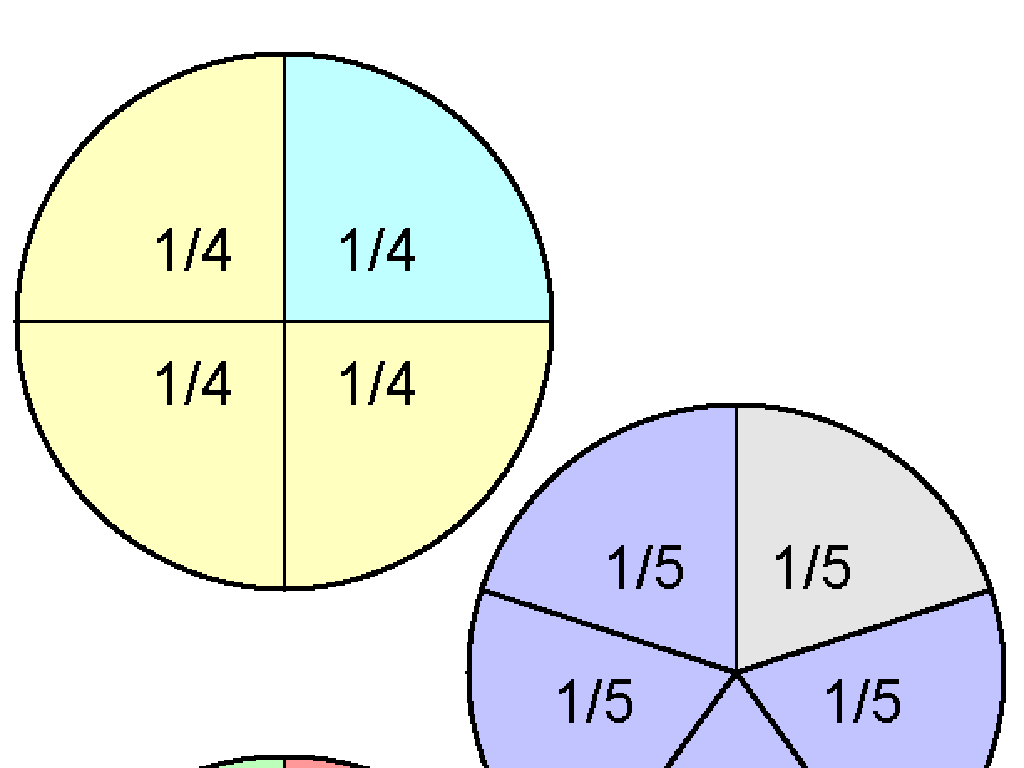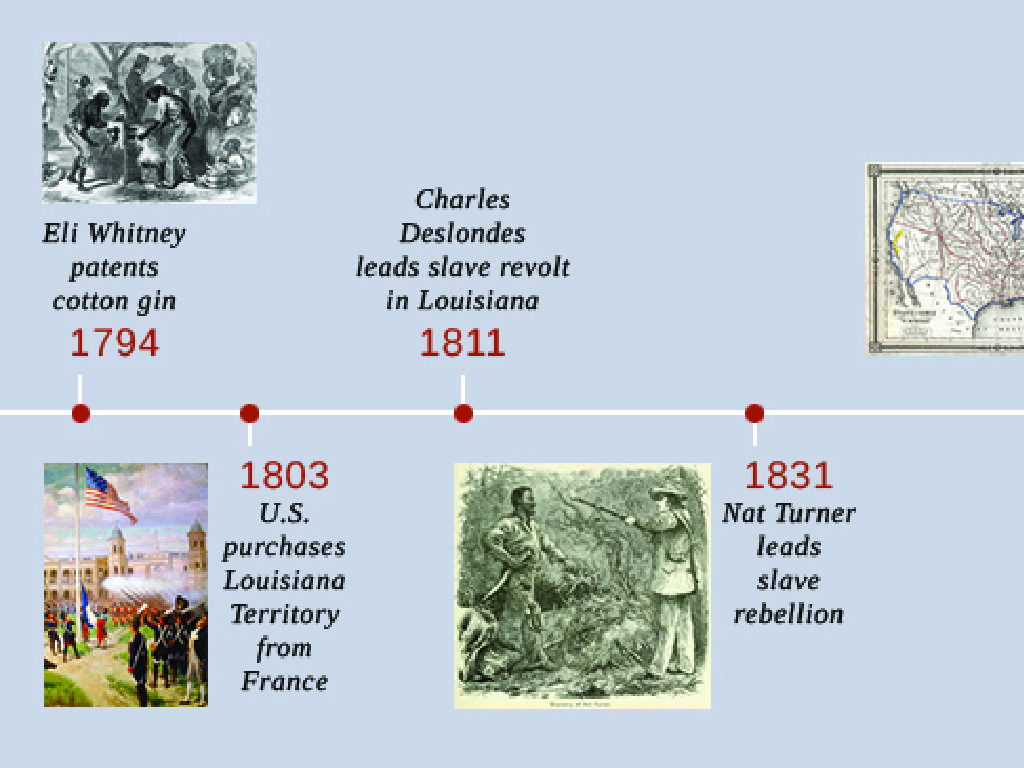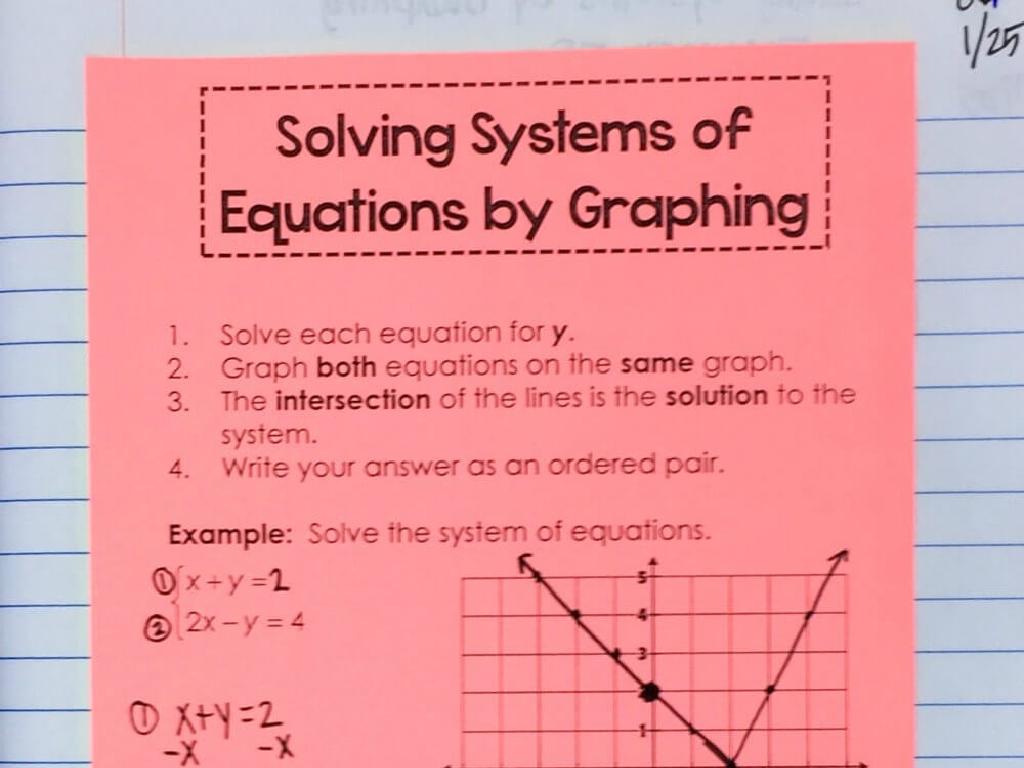Reflect A Point Over An Axis
Subject: Math
Grade: Sixth grade
Topic: Coordinate Plane
Please LOG IN to download the presentation. Access is available to registered users only.
View More Content
Reflecting Points on the Coordinate Plane
– Understand the coordinate plane
– A flat surface with two number lines: horizontal (X-axis) and vertical (Y-axis)
– Learn about the X and Y axes
– X-axis runs left-right, Y-axis runs up-down
– Reflecting a point over an axis
– To reflect a point, switch the sign of the coordinate on the axis of reflection
– Practice with examples
– Example: Reflect point (3, 4) over the X-axis to get (3, -4)
|
Begin with a brief review of the coordinate plane, ensuring students are familiar with the concept of horizontal and vertical number lines intersecting at the origin. Explain the X and Y axes, emphasizing their perpendicular nature and how they divide the plane into quadrants. Introduce the concept of reflection over an axis by explaining that it’s like flipping a point over a line. Provide clear examples, such as reflecting a point over the X-axis changes the sign of the Y-coordinate, while reflecting over the Y-axis changes the sign of the X-coordinate. Encourage students to visualize this as a mirror image across the respective axis. Conclude with practice problems where students reflect given points over one of the axes.
Understanding Reflection in the Coordinate Plane
– Reflection is like a mirror image
– Points can be reflected over an axis
– A point (x, y) becomes (-x, y) over the y-axis
– Reflection alters point positions
– The point moves to the opposite side of the axis
– Practice with coordinate plane
– Let’s reflect (3, 4) over the y-axis and the x-axis
|
Reflection in mathematics is similar to looking in a mirror. When we reflect a point over an axis on the coordinate plane, we are essentially ‘flipping’ it over that line. For example, reflecting a point over the y-axis changes its x-coordinate to the opposite sign, while its y-coordinate remains the same. During the class, demonstrate this concept by reflecting points over both the x-axis and y-axis. Have students practice with different points on the coordinate plane to solidify their understanding. Encourage them to visualize the reflection as a ‘mirror image’ of the original point across the chosen axis.
Reflecting Points Over the X-Axis
– The X-axis is horizontal
– Reflect by changing Y-coordinate sign
– If a point is above the X-axis, it flips below
– Example: Reflect (3, 4) over X-axis
– Original point (3, 4) becomes (3, -4) after reflection
– Resulting point is (3, -4)
|
When reflecting a point over the X-axis, the horizontal position of the point does not change; only the vertical position changes. This is achieved by changing the sign of the Y-coordinate. For example, if we have a point (3, 4), which is 3 units to the right of the origin and 4 units above, reflecting it over the X-axis would place it still 3 units to the right but now 4 units below the X-axis, making it (3, -4). Have students practice with different points and ensure they understand that the X-coordinate remains the same while the Y-coordinate sign is reversed. This concept is fundamental in understanding reflections in the coordinate plane.
Reflecting Points Over the Y-Axis
– Understand the Y-axis orientation
– The Y-axis is the vertical line in a coordinate plane
– Reflecting a point over the Y-axis
– To reflect, switch the X-coordinate’s sign
– Example: Point (3, 4) reflection
– Point (3, 4) becomes (-3, 4) after reflection
– Practice with different points
|
This slide introduces the concept of reflection over the Y-axis in the coordinate plane. Begin by explaining that the Y-axis is the vertical line that divides the plane into left and right halves. Emphasize that reflecting a point over the Y-axis involves changing the sign of the X-coordinate while keeping the Y-coordinate the same. Use the example of reflecting point (3, 4) to (-3, 4) to illustrate this concept. Encourage students to practice with different points to solidify their understanding. Provide additional examples and possibly a mini-activity where students can draw the coordinate plane and practice reflecting points over the Y-axis.
Practice Reflection on the Coordinate Plane
– Reflecting points together
– Reflection over the X-axis
– Flip the point across the horizontal X-axis
– Reflection over the Y-axis
– Flip the point across the vertical Y-axis
– Class examples walkthrough
– Use sample points to practice reflections
|
This slide is designed for a class activity to practice the concept of reflecting points over the X-axis and Y-axis on the coordinate plane. Start by explaining the concept of reflection and how it relates to symmetry. Demonstrate the reflection of a point over the X-axis by changing the sign of the y-coordinate while keeping the x-coordinate the same. Similarly, show the reflection over the Y-axis by changing the sign of the x-coordinate while keeping the y-coordinate the same. Work through examples as a class, using specific points on the coordinate plane to ensure students understand the process. Encourage students to participate by choosing points and predicting their reflections before confirming on the board. This interactive approach helps solidify their understanding of reflections in the coordinate plane.
Reflection Over Axes in the Coordinate Plane
– Reflecting over the X-axis
– Original point (x, y) changes to (x, -y)
– Reflecting over the Y-axis
– Original point (x, y) changes to (-x, y)
– Reflection is line-based
– Practice with coordinates
– Use example points to apply rules
|
This slide introduces the concept of reflection over the X and Y axes in the coordinate plane, which is a fundamental aspect of understanding transformations in geometry. When reflecting a point over the X-axis, the x-coordinate remains the same while the y-coordinate changes sign. Conversely, reflecting over the Y-axis keeps the y-coordinate the same and changes the sign of the x-coordinate. It’s crucial to emphasize that reflection occurs across a line (axis) and not a point. To solidify understanding, provide students with practice problems where they apply these rules to reflect points over the X and Y axes. Encourage them to visualize the reflection by drawing the coordinate plane and the axes, marking the original and reflected points.
Class Activity: Reflect Your Own
– Receive a coordinate plane sheet
– Reflect points over the X-axis
– Flip points vertically across the X-axis
– Reflect points over the Y-axis
– Flip points horizontally across the Y-axis
– Discuss reflections with a partner
|
In this interactive class activity, students will practice the concept of reflection over the X and Y axes using a hands-on approach. Provide each student with a worksheet that includes a coordinate plane and pre-plotted points. Students will then reflect these points over the X-axis by ‘flipping’ them vertically, and over the Y-axis by ‘flipping’ them horizontally. After completing the reflections, students will pair up to compare their results and discuss any observations or challenges they encountered. This activity will help solidify their understanding of reflections on a coordinate plane. Possible variations for different students could include reflecting points over different lines, such as y=x or y=-x, or using points with larger or smaller coordinates to adjust the difficulty level.
Reflection and Homework: Axis Reflections
– Review point reflection over axis
– Complete the reflection worksheet
– Practice with provided worksheet points
– Understand reflection over both axes
– Reflect points over the x-axis and y-axis
– Next class: Exploring rotations
|
As we conclude today’s lesson on reflecting points over an axis, ensure students have grasped the concept by summarizing the key points. For homework, assign the provided worksheet which includes various points that students need to reflect over the x-axis and y-axis. This will reinforce their understanding and prepare them for the next lesson on rotations. In the upcoming class, we will build on this knowledge by exploring how to rotate points and shapes on the coordinate plane, which is a crucial skill in understanding transformations in geometry.






